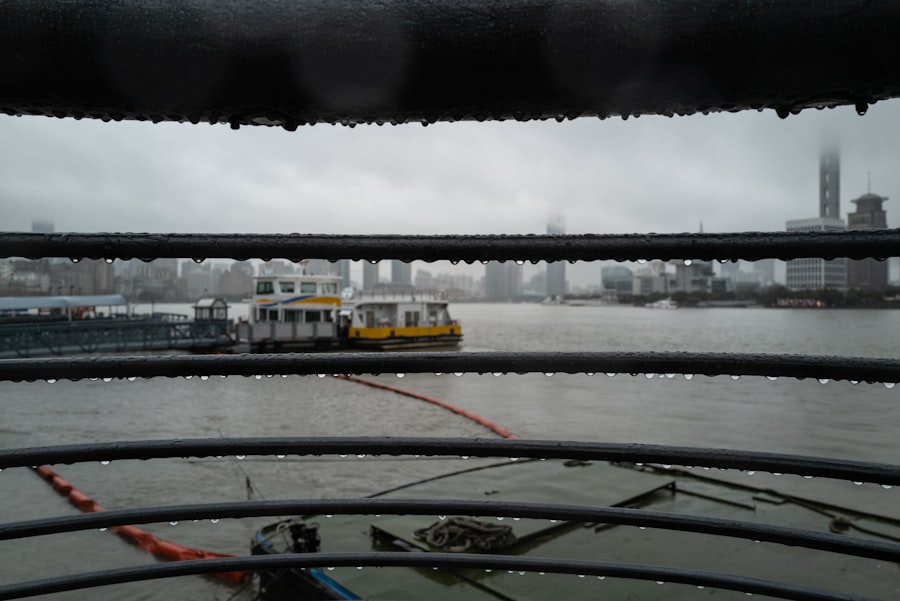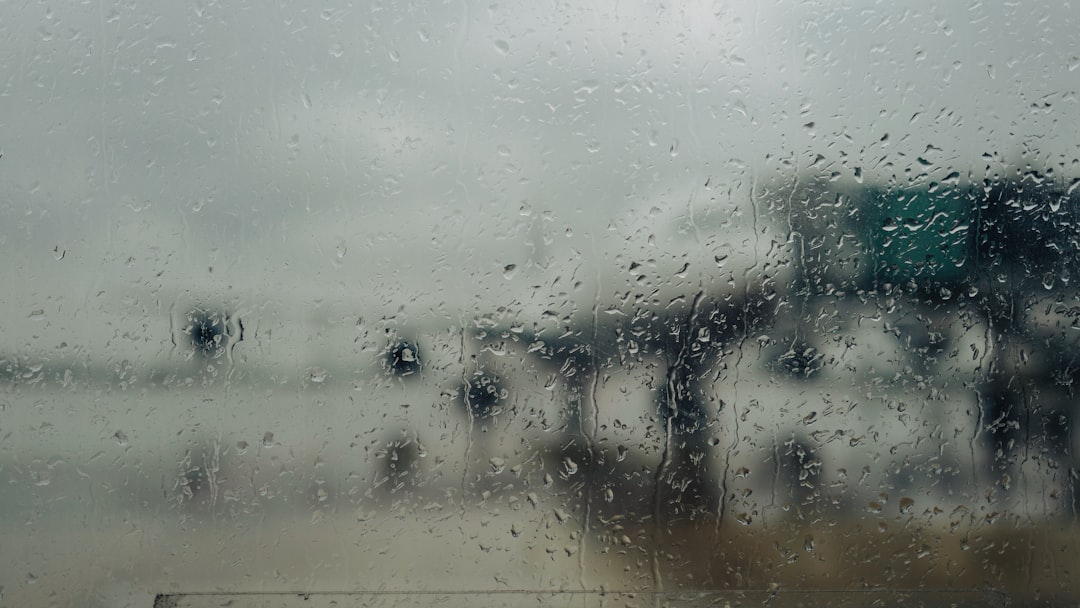The Drake Passage, a body of water situated between the southern tip of South America and Antarctica, is renowned for its tumultuous seas and unpredictable weather. Named after the English explorer Sir Francis Drake, who navigated these waters in the late 16th century, the passage serves as a critical maritime route for vessels traveling to and from the Antarctic region. Stretching approximately 800 kilometers (500 miles) wide, it is often regarded as one of the most challenging waterways in the world due to its unique geographical and climatic conditions.
The significance of the Drake Passage extends beyond its role as a shipping route; it is also a vital ecological zone that supports diverse marine life. The confluence of the Atlantic and Pacific Oceans creates a rich environment for various species, including whales, seals, and seabirds. However, this ecological richness comes with inherent risks, as the passage is notorious for its rough seas and rapidly changing weather patterns.
Understanding the complexities of the Drake Passage is essential for anyone considering a journey through this formidable stretch of water.
Key Takeaways
- The Drake Passage is a body of water between South America’s Cape Horn and the South Shetland Islands of Antarctica, known for its rough seas and challenging weather conditions.
- Weather patterns in the Drake Passage are characterized by strong winds, high waves, and rapidly changing conditions due to the convergence of the Southern Ocean and the South Pacific Ocean.
- Crossing the Drake Passage presents challenges such as seasickness, extreme cold, and the potential for rough weather, making it one of the most difficult maritime routes in the world.
- The impact of weather on ship travel in the Drake Passage can lead to delays, route changes, and discomfort for passengers and crew members.
- Safety precautions for crossing the Drake Passage include securing loose items, wearing appropriate clothing, and following instructions from experienced crew members to ensure a safe journey.
Weather patterns in the Drake Passage
The weather patterns in the Drake Passage are characterized by their volatility and intensity. The region experiences strong winds, heavy precipitation, and rapidly shifting temperatures, making it a hotspot for maritime meteorology. The convergence of cold Antarctic waters with warmer currents from the north creates a dynamic atmosphere that can lead to sudden storms and rough seas.
Sailors and travelers alike must remain vigilant, as conditions can change from calm to chaotic within a matter of hours. One of the most notable features of the weather in the Drake Passage is the prevalence of the “Roaring Forties,” a term used to describe the strong westerly winds that dominate the region between 40 and 50 degrees south latitude. These winds can reach speeds of over 60 knots, creating formidable waves that can rise to heights of 10 meters (33 feet) or more.
Such conditions pose significant challenges for vessels attempting to navigate through the passage, necessitating a thorough understanding of weather patterns and their potential impact on travel.
Challenges of crossing the Drake Passage

Crossing the Drake Passage presents numerous challenges for mariners and travelers alike. The unpredictable nature of the weather can lead to treacherous conditions that test even the most experienced sailors. The combination of strong winds, high waves, and sudden storms can create a perilous environment, making it essential for vessels to be well-prepared before embarking on this journey.
Additionally, the remoteness of the passage means that assistance may not be readily available in case of emergencies. Another significant challenge is the psychological toll that crossing the Drake Passage can take on passengers. The fear of rough seas and potential capsizing can lead to anxiety and discomfort among travelers, particularly those who are not accustomed to maritime travel.
It is crucial for those planning to cross the passage to be mentally prepared for the possibility of encountering rough weather and to understand that such experiences are part of the adventure.
Impact of weather on ship travel
| Weather Condition | Impact on Ship Travel |
|---|---|
| Clear skies | Smooth sailing, minimal impact |
| Heavy rain | Reduced visibility, slower speed |
| Strong winds | Difficulty in steering, potential delays |
| Fog | Reduced visibility, increased risk of collision |
| Stormy conditions | High waves, potential for rough seas |
The impact of weather on ship travel in the Drake Passage cannot be overstated. Weather conditions dictate not only the safety of vessels but also their speed and efficiency. Adverse weather can lead to delays, detours, or even cancellations of planned voyages.
For commercial shipping routes, this can result in significant financial losses and logistical challenges. For expedition cruises and research vessels heading to Antarctica, unfavorable weather can hinder scientific missions and exploration efforts. Moreover, weather-related challenges extend beyond immediate safety concerns.
The physical strain on ships navigating through rough seas can lead to wear and tear on vessels, necessitating more frequent maintenance and repairs. Ship operators must account for these factors when planning voyages through the Drake Passage, ensuring that their vessels are equipped to handle the rigors of this demanding environment.
Safety precautions for crossing the Drake Passage
Given the inherent risks associated with crossing the Drake Passage, implementing safety precautions is paramount for both crew members and passengers. One of the most critical measures is ensuring that all safety equipment is in proper working order before departure. This includes life jackets, lifeboats, emergency beacons, and communication devices.
Regular drills should also be conducted to familiarize everyone on board with emergency procedures. Additionally, it is essential for vessels to have experienced crew members who are well-versed in navigating challenging waters. Knowledge of local weather patterns and sea conditions can make a significant difference in ensuring a safe passage.
Furthermore, maintaining open lines of communication with meteorological services allows crews to receive real-time updates on changing weather conditions, enabling them to make informed decisions about their route and speed.
Strategies for coping with rough weather

When faced with rough weather in the Drake Passage, there are several strategies that crews and passengers can employ to enhance their comfort and safety. One effective approach is to adjust sailing speed based on current conditions. Slowing down during particularly turbulent periods can help reduce the impact of waves on the vessel, minimizing discomfort for those on board.
For passengers, it is advisable to remain in designated areas of the ship during rough weather. Staying away from open decks and securing personal belongings can prevent injuries and damage during turbulent conditions. Additionally, engaging in calming activities such as reading or watching movies can help distract from any anxiety caused by rough seas.
Crew members should also provide regular updates about conditions and reassure passengers that they are trained to handle such situations.
Importance of monitoring weather conditions
Monitoring weather conditions is crucial for ensuring safe navigation through the Drake Passage. Continuous observation allows crews to anticipate changes in weather patterns and adjust their course accordingly. Utilizing advanced meteorological tools and satellite technology enables vessels to receive accurate forecasts and real-time updates about impending storms or shifts in wind direction.
Moreover, understanding local weather phenomena can provide valuable insights into potential hazards. For instance, recognizing patterns associated with squalls or sudden wind shifts can help crews prepare for adverse conditions before they escalate. By prioritizing weather monitoring, vessels can enhance their safety protocols and improve overall travel experiences for passengers.
Technology used to forecast weather in the Drake Passage
Advancements in technology have significantly improved weather forecasting capabilities in challenging regions like the Drake Passage. Modern vessels are equipped with sophisticated radar systems, satellite communications, and onboard meteorological instruments that provide real-time data about sea conditions and atmospheric changes. These tools enable crews to make informed decisions about navigation and safety.
Additionally, meteorological agencies utilize advanced computer models that analyze vast amounts of data from various sources, including satellites and buoys deployed throughout the region. These models help predict weather patterns with greater accuracy, allowing ships to plan their routes more effectively. As technology continues to evolve, it plays an increasingly vital role in enhancing safety and efficiency for those traversing the unpredictable waters of the Drake Passage.
Historical weather events in the Drake Passage
The history of maritime travel through the Drake Passage is marked by numerous significant weather events that have shaped navigational practices in the region. One notable incident occurred in 1914 when Ernest Shackleton’s ill-fated expedition aboard the Endurance encountered severe storms while attempting to reach Antarctica. The crew faced extreme conditions that ultimately led to their ship being trapped in ice for months before they were forced to make a daring escape.
Another historical event worth mentioning is the sinking of several vessels due to unexpected storms in the passage over the years. These incidents serve as stark reminders of the dangers posed by this body of water and highlight the importance of respecting its unpredictable nature. Such historical accounts underscore why modern mariners must remain vigilant when navigating these treacherous waters.
Tips for travelers crossing the Drake Passage
For travelers preparing to cross the Drake Passage, several tips can enhance their experience and ensure safety during this adventure. First and foremost, it is essential to pack appropriately for varying weather conditions. Layered clothing that can be adjusted based on temperature changes will provide comfort during both calm and rough seas.
Understanding emergency procedures and knowing where safety equipment is located can instill confidence during challenging moments at sea. Additionally, staying hydrated and consuming light meals can help mitigate seasickness—a common concern among those crossing this notorious passage.
Lastly, maintaining a positive mindset can significantly impact one’s experience while navigating through rough waters. Embracing the adventure and recognizing that challenges are part of exploring such a unique region can lead to memorable moments despite any discomfort experienced along the way.
Navigating the challenges of the Drake Passage
Navigating the challenges presented by the Drake Passage requires careful preparation, respect for nature’s unpredictability, and an understanding of maritime safety protocols. The passage’s reputation as one of the most treacherous waterways serves as both a warning and an invitation for adventurers seeking to explore its unique beauty and ecological significance. By prioritizing safety measures, monitoring weather conditions diligently, and employing effective coping strategies during rough seas, travelers can enhance their experience while traversing this remarkable stretch of water.
As technology continues to advance in forecasting capabilities, future voyages through the Drake Passage may become safer and more efficient than ever before—allowing explorers to embrace both its challenges and wonders with confidence.
The Drake Passage, known for its unpredictable and often harsh weather conditions, remains a significant challenge for sailors and researchers navigating between the Atlantic and Pacific Oceans. Recent reports indicate that the current weather patterns in the Drake Passage are particularly volatile, with strong winds and high waves posing risks to vessels. For those interested in understanding more about the geographical and meteorological dynamics of this region, a related article on MyGeoQuest provides in-depth insights. You can read more about it by visiting this article on MyGeoQuest.
WATCH NOW! Drake Passage: Earth’s Deadliest Waters Revealed
FAQs
What is the Drake Passage?
The Drake Passage is the body of water between the southern tip of South America and the northern tip of the Antarctic Peninsula. It is known for its rough seas and challenging weather conditions.
What is the weather like in the Drake Passage now?
The weather in the Drake Passage can be highly variable, but it is generally characterized by strong winds, rough seas, and cold temperatures. Storms and low-pressure systems are common in this region.
What are the typical weather patterns in the Drake Passage?
The weather in the Drake Passage is influenced by the strong westerly winds and the convergence of the cold Antarctic air with the warmer air from the north. This often leads to turbulent weather conditions, including high winds and rough seas.
How does the weather in the Drake Passage impact travel and shipping?
The challenging weather conditions in the Drake Passage can make travel and shipping difficult and dangerous. Ships crossing the passage may experience heavy seas and strong winds, leading to potential delays and discomfort for passengers and crew.
Are there any specific weather warnings or advisories for the Drake Passage?
Weather warnings and advisories for the Drake Passage are issued by meteorological agencies and organizations to alert ships and travelers to potentially hazardous conditions. These warnings may include information about strong winds, high seas, and storm systems.
